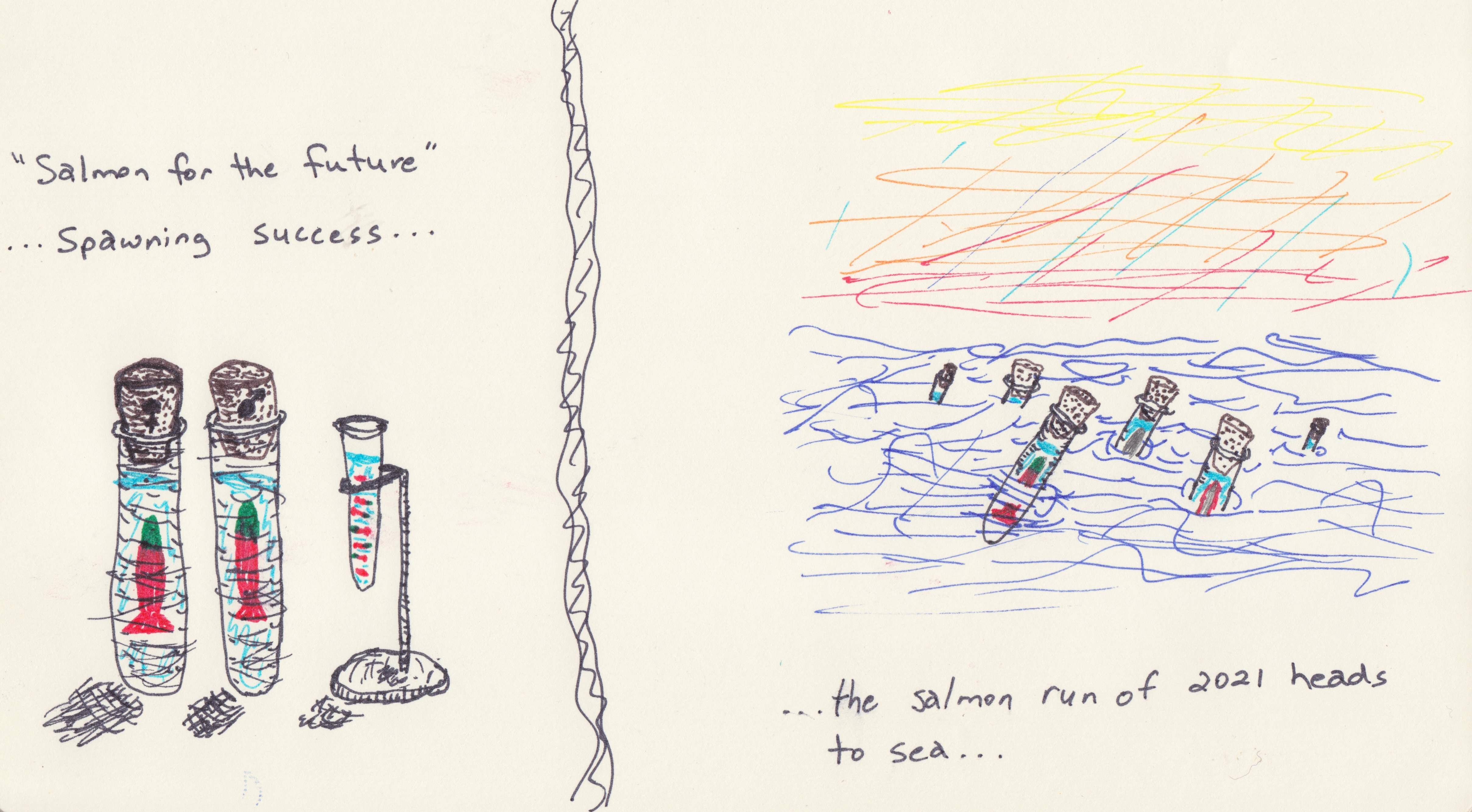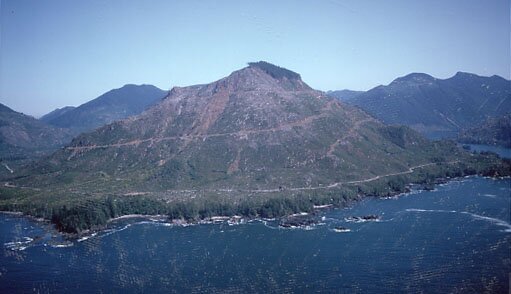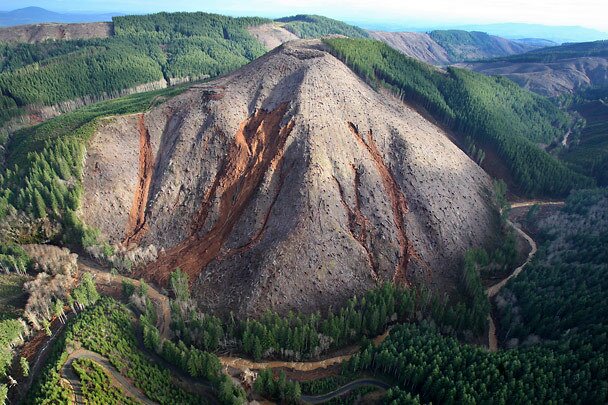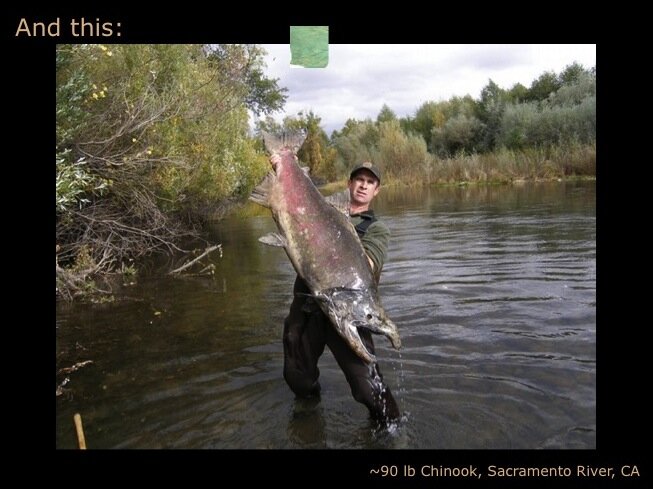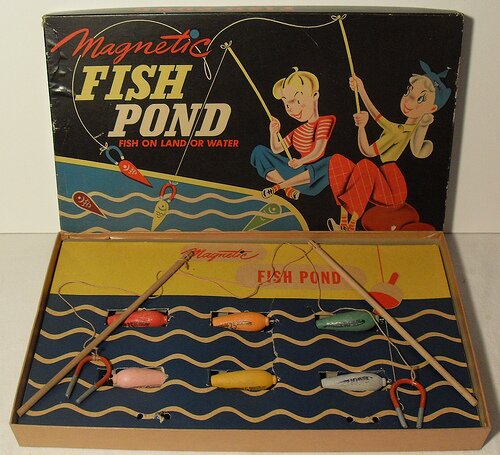During a quick look around Twitter and the ‘tweets’ of some fishy folk, I came across various news articles from other geographic areas with wild salmon fisheries. It got me pondering the great Alaskan salmon fisheries experiment…
Here is salmon catch in Alaska for the last century… or so… (the PNP program is the “public — non-profit program” for running salmon hatcheries – ocean ranching operations).

Are these levels sustainable into the future?
Is there any way possible that this is sustainable into the future?
_ _ _ _ _ _ _
Here are two other telling graphs:
.
Is there a trend here?
.
.
.
.
.
.
.
That trend has a common shape… and curiously the Alaskan commercial salmon catch has a price trend that may be foreshadowing the catch trend…
.
.
(Remember, there was no shortage of salmon being caught prior to 1878 — especially in Alaska where Russian and other ‘explorers’ and ‘settlers’ were pillaging the coast for sea otter furs for quite some time prior to 1878 — And First Nations and Inuit had been harvesting wild salmon for eons prior to ‘contact’ — including in a commercial context for trade…
_ _ _ _ _ _ _
Now, let’s add another even more worrisome trend into this Alaskan commercial salmon catch graph:

Hatchery to wild salmon commercial catch in Alaska
This graph comes compliments of “” (Knapp, Roheim and Anderson, 2007). It’s suggesting that the average hatchery-salmon catch is starting to approach 25% of the commercial catch in Alaska — or ocean ranching as they call it.
As the black boxes in the graph demonstrate, and as history most likely teaches us, the great intervention will need to continue to maintain catch levels that high. As we move into the second and third decades of the 2000s the hatchery-ocean ranching intervention will need to continue and the percentage of catch supplied by human intervention will continue.
The potential problem here is that this is a nasty little cycle that no one really wants to talk about…
_ _ _ _ _ _
Hatcheries/Ocean ranching operations in Alaska are run by the PNPs — the “public — non-profit partnerships” . These were formed in the 1970s and 80s when the State of Alaska took over management of wild salmon from the Feds (as shown in the graphs).
These PNPs are largely operated by commercial fishing associations and the like. This means that the hatcheries-ocean ranching operations were set up under the same auspices of Canada’s Salmon Enhancement Program (SEP) — to increase salmon production and therefore increase commercial salmon catches.
These grand industrial/ecological balance upsetting experiments began in earnest in the 1970s. A time of a different mainstream cultural mindset, and a different understanding of ecological processes (well… sort of…).
In Alaska, the key to keeping these PNP Aquaculture Associations (hatchery-ocean ranching operations) afloat is that salmon caught commercially have:
FIRST — a cost recovery component and then
SECOND — a profit motive for the commercial fishing folks.
However, as one can see in the graphs above — stupendous salmon catch levels are being maintained at over 200 million fish across Alaska; YET the price levels are falling faster than the 2008 Dow Jones stock market index. (And cracks are starting to show in whether these catch levels can be maintained — see Yukon River fishery disaster at end of post)
And just like the stock market, sure there’s been a little blip back up in price — but nothing that resembles past price levels.
What does this mean for the Alaskan Hatchery-Ocean Ranching Operations?
Here’s a sample from one of the annual reports: 2008 Annual Report.
Cook Inlet Aquaculture Association (CIAA) was created to make more salmon for all users in Cook Inlet. Our forefathers hoped to provide a home for salmon biology; to gather ideas and knowledge, and a means of broadcasting this science to fishing communities and to the general public. These founding visionaries clearly planned to have a hatchery. (my emphasis)
Quite a fascinating opening to an annual report… I’m not one to quite buy-in to the philosophy of salmon hatcheries as manifest destiny… however, each to their own…
The annual report goes on to explain:
Meanwhile, the CIAA hatchery program also continues to financially struggle. A new sockeye project at Tutka Bay was very successful in 2008. Recent high prices for early hatchery-produced sockeye at Resurrection Bay have also shown promise. I’m currently holding my breath and hoping adjustments to the cost recovery program are successful, concurrent with improvements in ocean survival for the Resurrection Bay stocking.
About 15 hatcheries across Alaska have closed and facilities at Crooked Creek, Eklutna, Port Graham, and Tutka Bay are among them. These sites continue to be used for various projects, but at a fraction of their capabilities. I believe CIAA needs to find funding to maintain operation of Trail Lakes Hatchery. Achieving escapement goals for all systems in Cook Inlet and financing a hatchery are challenging endeavors, but they are essential for the many users of today’s salmon.
We need to find a way through the financial problems we are facing and then begin to build a healthy revenue reserve. The men and women who founded CIAA were wise to do so. I am proud to join them in their effort to realize more salmon for all users.
And so now hatchery/ocean ranching operations are having to close due to financial hardship. Furthermore, some of the practices such as lake fertilization, and mass hatchery operations are starting to show some serious issues on the ecological front. Some of these are even highlighted in the good old Marine Stewardship Council audits of the Alaskan salmon fishery (however, that’s a separate post…)
In short, the mass practice of hatchery releases has huge impacts on wild, self-sustaining populations — in terms of loss of genetic diversity and in terms of giving a false sense of security in opening certain fisheries.
_ _ _ _ _ _
And so now the vicious cycle begins — something akin to this:
And so what is a State government to do?
It has set this mess up through its devolution from Fed responsibility.
If more hatcheries go belly up (like a salmon in an oil spill) this means less salmon going to sea and the less salmon we will see (returning).
This means lower catch, which means less $$ for commercial fishing industry… and less $$ in cost-recovery initiatives of these public — non-profit aquaculture operations.
Less fish going out, less fish coming in, less money coming in.
Interim solution?
Catch more fish to bring in more $$ to curb the debt load.
Catching more fish means less fishing spawning and producing naturally. Less fish producing naturally, and less fish being propagated by humans — means less fish to catch down the road.
What does this all set up?
Government bail-out.
Bail out of the fishing industry — like US government had to do on the Yukon River last year.
reporting in January 2010:
U.S. Commerce Secretary Gary Locke declared a commercial fishing disaster for Yukon River king salmon Friday following two years of poor runs, fishing restrictions and bans.
“Communities in Alaska along the Yukon River depend heavily on chinook salmon for commercial fishing, jobs and food,” Locke said in a statement from the Commerce Department. “Alaska fishermen and their families are struggling with a substantial loss in income and revenues.”
_ _ _ _ _ _ _
When we intervene with most anything — e.g. oil-rich dictator run countries — history suggests that these interventions can — in the long-run — become very, very expensive and sometimes counterproductive.
When it comes to wild salmon — the interventions are endless (hatcheries, fertilization schemes, fake habitat construction, and so on…).
The problem is that once the interventions start ‘working’ everyone seems to forget they were interventions in the first place. And so we return to how things used to be — before the interventions…
The result?
A worse frigging situation than prior to the intervention.
Look at the US bank and auto industry bailout packages — do you really think the ridiculous executive compensation packages have stopped?
Or, that auto executives curbed their flying around in private jets?
Are individual citizens taking the example of debt out-of-control and curbing their own household debt?
fuggedaboutit…
Maybe we need to look at the root of the word and put it in the right context…
intervene comes from Latin intervenire “to come between, interrupt.”
Various definitions suggest: “Come between so as to prevent or alter a result or course of events”
Or most fitting for this situation: “Occur as a delay or obstacle to something being done.”
And what were we, or are we, “delaying”?
The inevitable.
If we continue to hammer away at salmon runs and at salmon habitats and ignore the potential perils of climate change and its affect on salmon and their habitat… we will reach a time when no intervention will offset the inevitable collapse…
What are we potentially delaying in relation to “something being done”.
That’s called lack of political will… (and public pressure)
And nobody wants to make the real tough decision… e.g. intervene on the interventions… because that will cost…
And the public has a tough time exerting pressure because the world of salmon and “salmon management” has become the world of technocrats, techno-bumpf, endless hundreds of pages government documents, inaccessible meetings flooded with inaccessible PowerPoint presentations, inaccessible government bureaucrats (e.g. “sorry that’s not my department), inaccessible language, and legislation that simply is not enforced, legal teams with little interest in enforcing and the list goes on…
Is it time for a full-on public intervention?
A Citizen’s Assembly on Wild Salmon?
Or…?





